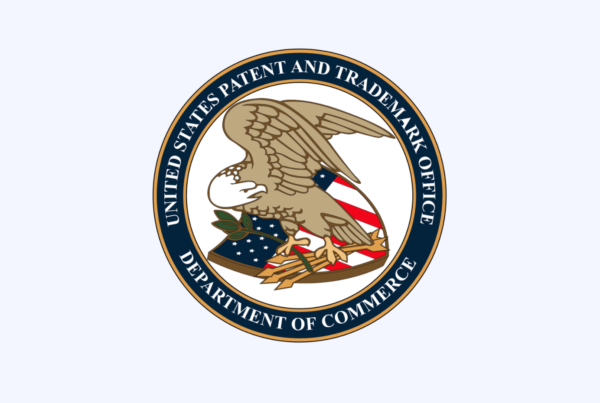What is GS1 US?
GS1 US is part of one of the largest identification and standards organizations in the world. Best known as the administrator of the U.P.C. barcode, GS1 US maintains and advocates for the use of a host of other data standards that support the supply chain. As a global, not-for-profit organization, GS1 US helps companies uniquely identify products, locations, and other assets and share information about them with trading partners and consumers in a consistent way. Additionally, the organization collaborates with a variety of industries to develop best practices for developing efficient supply chains, effective business relationships and providing consumers access to trustworthy information about the products they buy.
What are GTINs?
GTIN stands for Global Trade Item Number. This is the number encoded into a barcode that uniquely identifies a product when it is listed online or is read by a barcode scanner. There is a big opportunity for e-commerce businesses to benefit from identifying products with GTINs, as they help products surface in more search engine results online and can help small businesses build credibility. Online marketplaces like Amazon require GTINs because they help sellers prove that they are selling legitimate products and support good inventory management practices. Retailers and marketplaces consider authentic GTINs so helpful to their operations that they have started hiding product listings if they are not identified with a proper GTIN and specifically list GTINs in their seller guidelines.
How do I get GTINs?
Properly constructed GTINs originate from GS1 US. There are two options for obtaining authentic GTINs. For small businesses, the best option may be to license individual GS1 US GTINs for $30 each. This recently launched offering was developed in response to feedback from GS1 US members who were looking for more flexible product identification options.
For businesses that plan to launch 10 or more products or product variations, another option is to license a GS1 Company Prefix, which allows brands to create authentic GTINs in bundles of 10, 100, and other bulk quantities. The Prefix represents the first few numbers of the product GTIN and is what links a brand to a product.
No matter which option a business owner chooses, GTINs sourced from GS1 US will automatically be included in the GS1 Global Registry, a database that many retailers and online marketplaces use to verify product identification. Also, members will receive a certificate of ownership for either option, which helps confirm authenticity for retail partners.
What are the benefits of licensing a GS1 Company Prefix?
There are many benefits to licensing a GS1 Company Prefix. It helps sellers manage their growth and diversify their business long term. The Prefix allows members to create additional identifiers often used in retail supply chain business processes, such as the Serialized Shipping Container Code (SSCC) or GS1-128 barcode labels to identify cartons exchanged between trading partners. Also, the Prefix makes up the first few numbers of a product’s GTIN, which can help with inventory management and retailer relations. For instance, if a brand were to grow their business to the point where they have hundreds of GTINs to manage, the Prefix helps the brand owner classify their inventory and manage where each GTINs are sold. They help companies manage mixed cases and coupons too, and some healthcare companies need a prefix to meet various FDA regulations.
What are U.P.C.s? Are they the same as GTINs?
A U.P.C. (universal product code) is the most common type of barcode symbol—you see it on products every day and they are scanned at a store’s checkout counter. It is a data carrier and is used by retail systems to capture the GTIN via a scan.
It is a common misconception that a U.P.C. and GTIN are interchangeable and the same thing — especially among the online seller community. Some marketplace guidelines will refer to both U.P.C.s and GTINs, however, the U.P.C. is a barcode symbol with black lines and the GTIN is the identification number. A U.P.C. barcode, together with a product’s GTIN make it easy for businesses to track a product. However, GTINs are increasingly used on their own in online product listings to help form a bridge between a product’s physical presence and its digital identity and to prove product authenticity.
For example, Amazon states in its seller guidelines that their product managers will check all GTINs provided to them against the GS1 database and sellers may be delisted if the numbers are found to be invalid. This includes both types of GTINs that Amazon accepts– a GTIN-14, or a 14-digit GTIN, which is used for outer cases such as multiple packs of the same product, and a GTIN-12, a 12-digit GTIN, which would be accepted in Amazon’s system as a U.P.C. A 13-digit GTIN signifies an EAN (European Article Number), which is a barcode symbol used predominantly in Europe.
How are GTINs created?
GTINs are created in two ways. For those who opt for a single GS1 US GTIN, the identification number is automatically generated. For those who license a GS1 Company Prefix, the GTIN is created from their Prefix. In both cases, they receive a certificate to prove ownership.
Whether the seller has created GTINs using their GS1 Company Prefix, or licensed single GS1 US GTINs, they have access to GS1 US Data Hub | Product, which is an online tool for GS1 US members to create and manage GTINs and barcodes. Also using a GS1 US Solution Partner, sellers can outsource barcode art and printing needs. These providers are trained by GS1 US on GS1 Standards for barcodes.
What would be an alternate product identification method?
While there are third party barcode companies that allow a small business to simply purchase barcodes and the identification numbers encoded in them, retailers require companies to construct authentic identification numbers that specifically link a brand to the product being sold.
Purchasing ready-made barcodes or GTINs from another source outside of GS1 standards may mean a company is labeling its product with another company’s identification number—a short term solution that, in the long run, can cause confusion with retail partners, lead to unnecessary costs associated with relabeling products and hinder company growth.
When does a business need a new GTIN?
Though there are a few rare exceptions, business need to create a different GTIN for each product variation they sell. Product variations, such as different packaging quantities, colors, scents or flavors, require unique GTINs to distinguish one variation from another.
GS1 maintains a set of rules called the GTIN Management Standard that is available to help brands understand the nuances and specific instances of when new GTINs are needed. The standard services as a critical guide to help industry make consistent decisions about the unique identification of trade items in the supply chain.
GS1 US also offers an estimator tool, which helps business owners determine which option is right for them—a single GS1 US GTIN or a GS1 Company Prefix –based on how many products they have, how many variations of the product there are, and how they anticipate their company will grow in the future.
How are GTINs used on Amazon?
Online marketplaces like Amazon recognize the importance of product information to the shopper experience. Some shoppers today will give up on the online shopping experience altogether if they can’t find the information they are looking for on the site. With the proper unique product identification, a product can be surfaced in more search results leading to increased sales and loyalty. Online marketplaces are also more likely to work with brands long term if they are able to ensure consistency between a product’s physical and digital presence with proper GTIN usage.
Product identification is required in more than 25 Amazon product categories. Seller Central provides guidance on when products may be exempt, or if multipacks or bundles require additional GTINs. Generally, Amazon requires that each sellable unit have its own GTIN, including bundles (a grouping of similar hair accessories, for example) or multi-packs (a multi-pack of 4 boxes of crackers, for example). It is important to become familiar with Amazon’s rules for each, as there are specific items that are prohibited from being bundled or featured in a multipack, and product listings must contain specific information about the contents of these groupings.
What should sellers do if their listings are “hijacked” on Amazon?
Hijacked listings usually result from two actions. Occasionally, bad actors posing as legitimate sellers can steal a company’s product listing, claim it as their own, and collect sales earnings for products that are never shipped. Also, some sellers looking for a shortcut around the marketplace’s GS1 Standards requirements just put in whatever GTIN they can find without any real knowledge of how unique identification works.
Listings that are “hijacked” in either way should be immediately reported to Amazon. They will likely ask the seller to prove they are the rightful owner of the product in question by providing a GS1 Company Prefix or GTIN ownership certificate that effectively demonstrates the link between the company and the product via the GTINs assigned to those products. Amazon will check the GTINs in the GS1 Company Database (GEPIR®), which is the database of all the companies that have registered GTINs, to verify ownership.
GS1 US member support agents are skilled in assisting members with this issue. Please email info@gs1us.org to inquire about GS1 US’ escalation process for those who are experiencing a hijacking.
What are some common issues sellers find when listing products on Amazon?
The three most common issues sellers find related to product identification are:
1. Choosing the wrong type of product identification.
Although GTINs are encoded into U.P.C. and EAN symbols, the Amazon menu will ask a brand owner to select from EAN, U.P.C., or GTIN when listing products. Knowing which one to select is linked to the number of digits of a brand’s product identification number.
If the GTIN has 12 digits, the brand owner should select U.P.C., as GTIN-12s are encoded into U.P.C. barcodes. If the GTIN has 14 digits, this signifies an outer case identification number and should be used for when a case of six drinks are listed on Amazon, as well as the individual drink. Sellers in Europe will likely choose the EAN option, as their GTINs typically have 13 digits.

2. Details do not match.
This message is usually seen when sellers are listing a product that has a different brand or registered seller information than the details that are associated to the number being listed.
For example, if Ben’s Boots has a properly licensed GTIN from GS1 US, and then the seller tries to list Nike shoes on Amazon with a Ben’s Boots number, this will cause an error. If the brand is different than the company details registered with Amazon, proof of the connection must be supplied. Amazon will query if Ben’s Boots is allowed to sell Nike products, and permission, in the form of a letter of authorization or an invoice showing the stock being purchased, will need to be provided. These measures are in place to prevent fight counterfeit product sales and to curb product listing hijacking.
Product already exists.

Sometimes sellers will see an error message saying that the product you have listed may already be in the Amazon catalogue. Sellers should check to see if the product already exists with the same details–this is what causes Amazon to flag this as an error. Their systems maintain one product page per product and remove duplicates, also in an effort to reduce the instances of product listing hijacking.
Any tips for US sellers entering international marketplaces?
By applying a GTIN to a product, the identifier is globally unique and recognizable worldwide. If the seller wishes to list their same product on multiple Amazon platforms, they can utilize the same GTIN, but need to recognize that all the data attributes, specifically the images associated to the product, will also be shared on the other platforms. This can pose some issues if the images have specific language associated to the brand that is not applicable in that targeted region (for example English on the product listed on the Amazon Brazil platform, which should generally feature Portuguese on the product package). In that case, a new GTIN would need to be applied if there is different artwork, which would also disassociate the product from customer ratings across the various Amazon platforms.
How do I learn more about GS1 supply chain standards and product identification?
GS1 US offers extensive education and training options, many of which are free. Please visit www.gs1us.org/education-training to explore webinars, guidance documents, videos and more.
Additionally, for users unfamiliar with GS1 US Data Hub, the tool provided to all members to manage GTINs and product data, there are specific videos and lessons available once a user signs in. Please check out the GS1 US Data Hub Resources Center to enhance your knowledge.

Contributed by Michelle Covey, VP of Commercialization, GS1 US.






